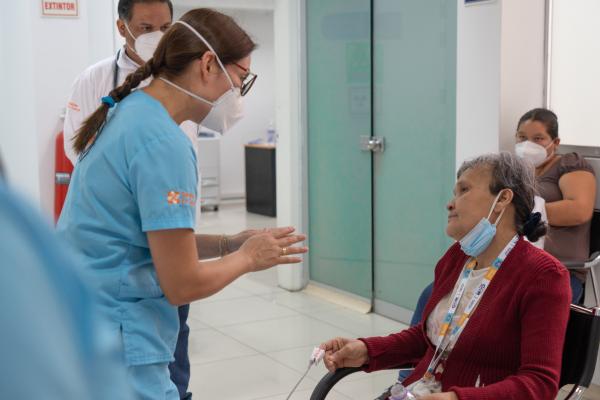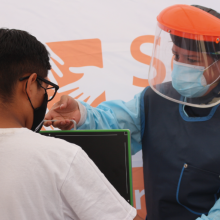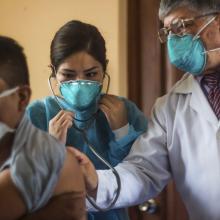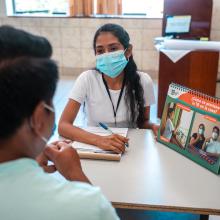Many people who overcome tuberculosis (TB) continue to face significant respiratory sequelae. Although they overcome the infection, some continue with chronic cough, shortness of breath and fatigue, evidence of the need for specialized medical care.
“They successfully complete treatment, but in some cases they may continue with significant respiratory symptoms,” explains Dr. Rafael Durand, TB specialist with the Global Fund’s TB-HIV Country Project.
This condition is called post-tuberculosis lung disease (PTLD), an understudied public health problem that reduces quality of life and increases the risk of new infections.
A 2023 study led by Dr. Anthony Byrne reported that 10% to 15% of TB survivors develop severe lung damage. In addition, he noted that current protocols only measure therapeutic success with microbiological parameters, without considering the sequelae that affect patients.
In light of this reality, the Ministry of Health (MINSA), through the Tuberculosis Prevention and Control Directorate (DPCTB), the Peruvian Society of Pneumology and Socios En Salud have been developing the first national guide for the care of PTLD at the first level of care.
The initial implementation will be carried out in three pilot Respiratory Rehabilitation Units (URR): the Juan Pablo II Health Center (North Lima), the Jicamarca WCC (East Lima) and the José Gálvez WCC (South Lima).
“It’s not just about curing TB, but about restoring people’s quality of life,” Durand emphasizes.
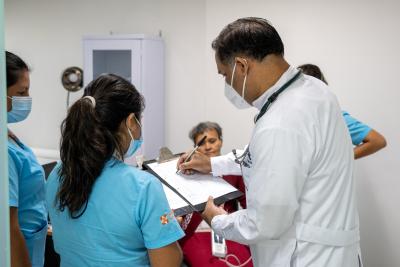
El Policlínico Socios En Salud desarrolló una guía clínica para la atención de personas con enfermedad pulmonar post-tuberculosis, permitiéndole ofrecer un manejo especializado y mejorar su calidad de vida.
Foto de SES
A pioneering effort
Dr. Byrne’s study made an urgent call: integrate lung function tests into clinical trials and develop post-treatment management strategies, especially for resistant TB, which causes further lung deterioration.
In Peru, there is still no specific treatment for these sequelae, but in December 2024 MINSA incorporated general guidelines for their management in the new Technical Health Standard for the Prevention and Control of TB.
In addition, in 2022, the Polyclinic of Partners In Health (POLSES) developed a clinical guide for the care of people with PTLD. Building on this experience, SES is collaborating with DPCTB to develop a standardized protocol for assessing and treating the sequelae of TB.
”This is pioneering work, as there is no previous evidence,” Durand points out.
Thus, given the lack of references, the guideline takes as its basis strategies used in chronic respiratory diseases, such as chronic obstructive pulmonary disease (COPD) through its GOLD Guide.
The key tools in this protocol include the COPD Assessment Questionnaire (CAT) and the mMRC dyspnea scale, standardized tests that allow the severity of symptoms to be measured and the most appropriate treatment to be defined for each patient.
The pilot centers, which previously provided care to patients with sequelae of COVID-19 and already have a pulmonary rehabilitation area, have spirometers and specialized personnel to care for people with PTLD. Its implementation will allow evaluating the effectiveness of the protocol and generate evidence for its future expansion.
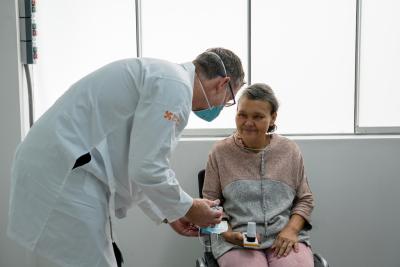
Mónica Mendoza recibe tratamiento en el POLSES para las secuelas que enfrenta tras superar la tuberculosis.
Foto de SES
Building consensus
The development of this guide marks a milestone in the management of tuberculosis in Peru. For the first time, it recognizes and prioritizes the care of those who, after overcoming the disease, continue to face its sequelae.
For its development, the MINSA organized a workshop in collaboration with SES and the University of Alabama at Birmingham. Pulmonologists, rehabilitation physicians and other specialists discussed on March 18-19 this year key strategies such as respiratory rehabilitation, prevention of complications and interdisciplinary coordination to improve clinical management.
They also made progress in identifying, classifying and standardizing treatment for patients who, after completing their TB therapy, continue to have persistent symptoms and come to the Respiratory Health Center for care.
“This guideline will help us unify criteria in the care of patients with post-TB lung disease who present with restrictions, obstructions or other respiratory problems,” Durand concludes. “We now know how to help them.”
Be part of the change. Get our actions, stories and opportunities to transform lives in your inbox. Subscribe here and join our movement for health!
